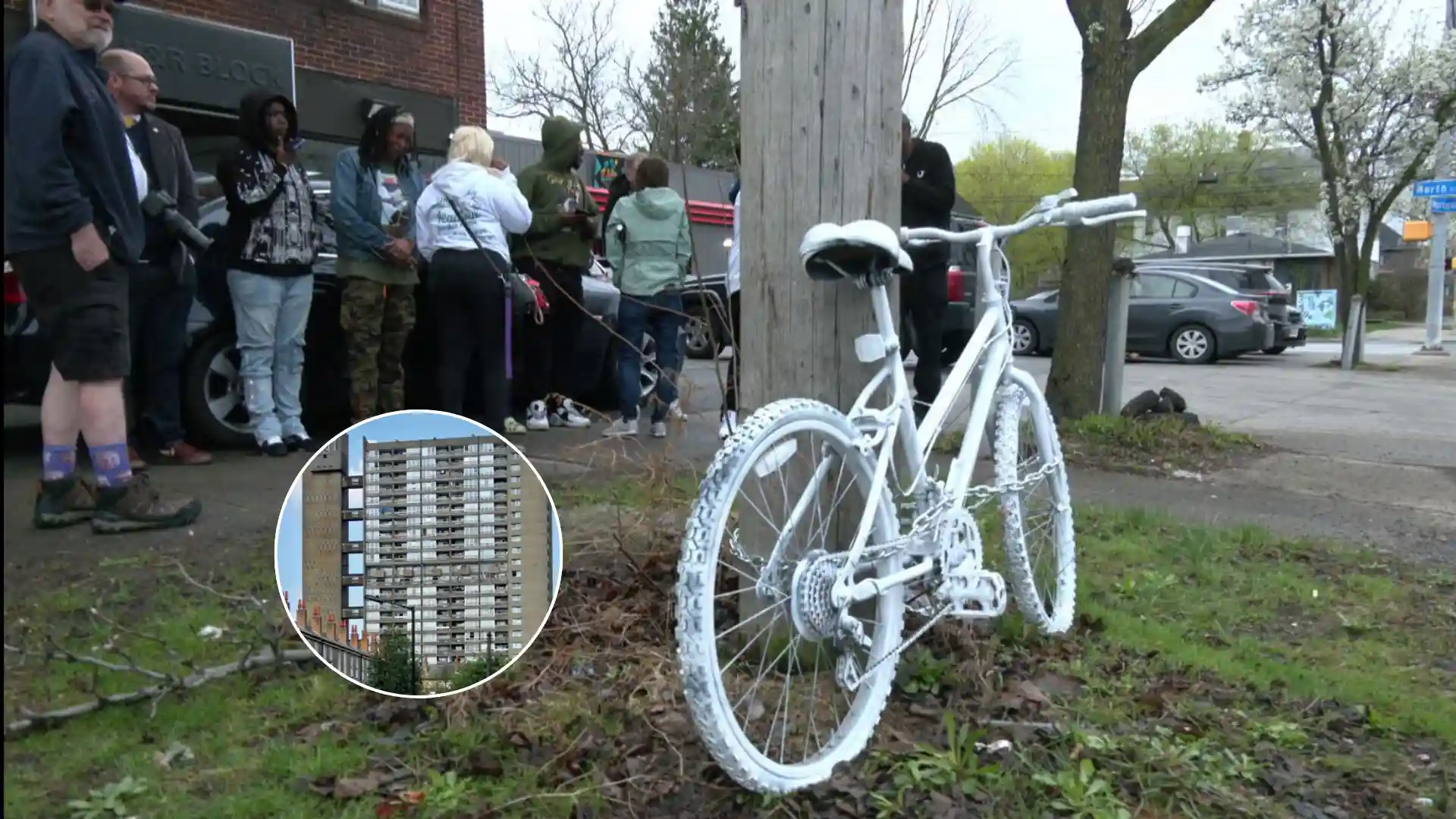Key Points:
- Tower Hamlets Council removed the ghost bike memorial dedicated to Matheus Piovesan, who was killed in a road incident in Tower Hamlets last year.
- Friends and community members of Matheus have criticised the council for being “grossly insensitive” by removing the memorial.
- The group “Critical Mass,” alongside Matheus’s friends, plans to reinstate the memorial ahead of the first anniversary of his death.
- Matheus Piovesan was a Brazilian cyclist who died in a fatal collision in Tower Hamlets, raising concerns over cyclist safety in the area.
- The ghost bike memorial, painted white and placed at the site of his death, served as a poignant reminder of road safety issues.
- Local campaigners emphasise the importance of visibility of such memorials to honour victims and raise public awareness.
- The council has not provided detailed explanations for the removal but stated general policies about street installations.
- The reinstatement effort coincides with wider calls for improved cyclist protections and safer urban transport infrastructure in London.
What happened to Matheus Piovesan’s ghost bike memorial in Tower Hamlets?
As reported by the Evening Standard, Tower Hamlets Council removed the ghost bike memorial dedicated to Matheus Piovesan, a Brazilian cyclist who was fatally struck by a vehicle in the borough last year. The memorial, a white-painted bike placed at the site of Matheus’s death, was a symbol of remembrance and a public appeal for road safety. Its removal sparked outrage among Matheus’s friends and local cycling advocates.[Evening Standard]
Why has the removal of the memorial been criticised?
Friends of Matheus and members of the Critical Mass cycling group described the council’s action as “grossly insensitive”. They argued that the removal erased a vital public symbol that commemorates a lost life and highlights the dangers faced by cyclists in London. As stated by one community member to Evening Standard, the memorial helped keep awareness alive and maintain pressure on local authorities to improve road safety measures for cyclists.[Evening Standard]
Who is behind the efforts to reinstate the memorial?
The initiative to put the ghost bike back in place is being led by Matheus’s close friends and members of the Critical Mass group, a well-known cycling advocacy collective. Their plan is to reinstall the memorial prior to the first anniversary of Matheus’s tragic death, ensuring that the community remembers his life and the ongoing risks cyclists face on London’s roads.[Evening Standard]
What was Matheus Piovesan’s background and how did he die?
Matheus Piovesan was a Brazilian national residing in London. He was killed in a road traffic collision in Tower Hamlets, one of London’s most populous boroughs. The incident spotlighted issues surrounding cyclist safety in dense urban environments, particularly areas with heavy traffic and limited cycle infrastructure.[Evening Standard]
What significance do ghost bike memorials hold?
Ghost bikes, typically white-painted bicycles placed at sites where cyclists have died, are a well-established form of grassroots memorialisation worldwide. They serve both as a tribute to the deceased and as a stark reminder to motorists, pedestrians, and policymakers about the vulnerability of cyclists and the urgent need to improve road safety. The ghost bike for Matheus was no exception and had become a local symbol of this cause.[Evening Standard]
How has Tower Hamlets Council responded to the criticism?
According to Evening Standard, the council has not issued a detailed public explanation for the removal but has referred to its general policies regarding street furniture and roadside installations. No formal statement addressing the specific concerns raised by the community over sensitivity or the memorial’s importance has been published.[Evening Standard]
What broader issues does this incident highlight about cycling safety?
The case of Matheus Piovesan highlights persistent challenges in London regarding cyclist safety, including inadequate infrastructure, dangerous road layouts, and the need for stronger measures to protect vulnerable road users. Campaigners argue that civic authorities need to prioritise clear, visible reminders like memorials to maintain public awareness and advocate for safer cycling conditions.[Evening Standard]
What are the next steps planned by the community and activists?
The friends of Matheus along with Critical Mass intend to arrange the restoration of the ghost bike memorial timed for the first anniversary of Matheus’s death. This act is intended both to honour Matheus’s memory and rejuvenate calls for improved road safety legislation and infrastructure investment in Tower Hamlets and across London.[Evening Standard]
Related News:
- Tower Hamlets Chinese Embassy: Council withdraws objections to the Chinese “super-embassy”
- Tower Hamlets flat ebike blaze case: Court likely to sentence landlord couple for ‘Housing Offences’
- Man assaulted with unknown substance in Blackwall, East London
- Asda Stepney Green Closure at Anchor Retail Park, Tower Hamlets Confirmed
